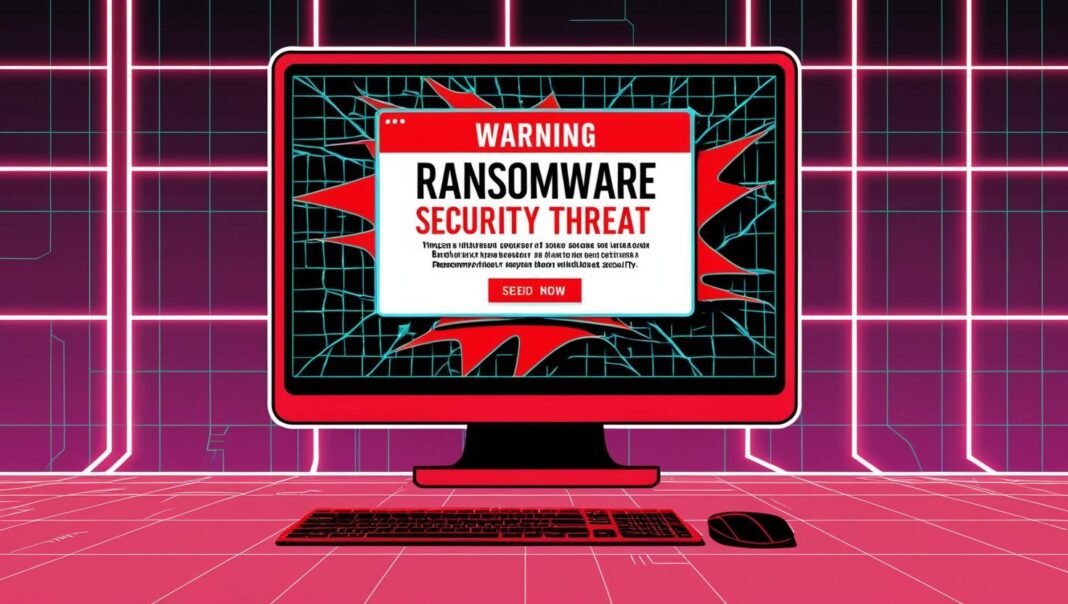Ransomware In APAC 2025: The Fight Back Gets Harder
The Ransomware Surge: Shocking Numbers
The Asia-Pacific (APAC) region’s enterprises are preparing for what cybersecurity experts anticipate will be a rocky road to 2025. Ransomware, a particularly pernicious and prevalent form of cybercrime, is showing no signs of slowing down. The global cybersecurity firm Rapid7 raised technology threats black flag, drawing attention about speeding threats which are a result of zero-day vulnerabilities and with the dynamics of ransomware industry changing.
But this is not just another wave of cyber panic. The threat is very real — and if the past few years are any guide, it’s only going to get worse before we collectively decide to act.
Let’s talk numbers. As per Rapid7s Ransomware Radar Report, 21 different ransomware groups cropped up around the world only in the first six months of year 2024. Another analysis found that criminals took in a staggering $1.1 billion in ransom payments in 2023 — twice the take from the prior year. These numbers do not merely indicate a spike. They cite an emerging, structured and profitable ecosystem.
And it’s not that the report specifically breaks out data for APAC, but the region isn’t being spared. According to PwC’s Digital Trust Insights survey, 14% of companies in the region now regard zero-day vulnerabilities as one of the key third-party cyber threats — and that interest is projected to flow into 2025.
New Entry Points and Zero-Days
Zero-day exploits — bugs that have not been patched, and hackers are even unaware of — are now a game changer. Raj Samani, Chief Scientist at Rapid7, says that these exploits used to come up at about one per quarter. Now? They’re nearly weekly events.
What’s behind the rise? Money, mostly. A successful ransomware operation has transferred millions of dollars into criminal hands — money that gets put back into better tools, better infrastructure and, yes, more zero-day exploits. These are not hobbyists anymore. These are well-financed undertakings.
As a consequence, ransomware gangs are finding ever more ingenious ways to break into systems — ways that the attackers might have considered too challenging, or not worth the effort. And along with that access comes more attacks, more breaches, and more purloined information.
The APAC Angle: Going Local Strikes Sophisticated ActionControllerfare with Regional Investment Targeting
The APAC region isn’t simply reeling under random punches thrown by worldwide ransomware gangs. It is going the way of a deliberate target. Attackers are adjusting their campaigns depending on which country or sector they’re targeting. This means separate ransomware gangs are prioritizing different APAC countries depending on suspected weaknesses or expected payday.
Organizations are under mounting pressure in locations such as Singapore, Malaysia and Australia. Many continue to pay ransoms just to get back in business. 82% of Singapore, Malaysia IT leaders would pay ransom to recover data: Survey According to the company’s poll conducted in Singapore, as well as Malaysia, most respondents also seem to be comfortable with a potential hack of their smart devices and accounts. In Australia and New Zealand it was not much, if anything, lower.
This establishes a pernicious circle: While corporations keep paying, ransomware remains an easy way for criminals to make money — and they are likely to keep doing it.
Affiliate Model: Easier to Get In, but More to Lose
Another developing trend is the affiliate system used to spread ransomware. It’s a structure that allows one group to create the ransomware software, while another group — often less skilled — focuses on distribution.
The risk there is that Samani fears that if those top tier ransomware groups now have zero-day tools in their arsenal, they can begin drawing in affiliates that aren’t even technical experts. This reduces the barrier of entry into the ransomware operation and makes it more available for wider and frequent attack.
The result? A wider cast of attackers, even less predictability, and greater operational chaos for IT teams as they seek to defend themselves against a growing onslaught of threats.
The Regulatory Response: Prohibitions, Requirements, and Unintended Outcomes
Governments are taking notice. One of the results of these efforts is that we now have more ICRI members than at any other time, reflecting increased willingness to address the ransomware threat at scale.
One of the most aggressive steps has been taken in Australia, which now requires all companies with at least $3 million in annual turnover to report when they have paid ransom. They must now report a payment within 72 hours.
Some are even weighing outright bans on ransom payments. However well intentioned, this can have unintended effects. So if companies aren’t supposed to pay to unlock the data, what’s their Plan B? What does that mean for small businesses with no backups, no alternatives to pivot to, no way to make that time up?
Samani implores companies to confront these tough questions now — not when they’re already in the midst of a crisis. “If my way of doing things is to pay ransom, and the way I’m doing things is going to be made illegal, then what is that going to do to my bottom line?”
What Organizations Can Do Now
Get Back to Basics
Sabeen Malik of Rapid7 stresses the importance of good cyber hygiene. That means implementing basic practices that are commonly overlooked, such as managing passwords, using multi-factor authentication, consistently patching software and managing user privileges appropriately.
In a world addicted to cutting-edge tech, the basics are sometimes forgotten. But they matter — a lot.
Ask Your AI Vendors Hard Questions
Artificial intelligence is being called a game changer for cybersecurity, but there are limitations to consider when using AI for information security. What should you do? “Ask vendors the tough questions,” advises Samani:
- What are you doing to detect and respond?
- Do you have an incident response retainer in place?
- How frequent is your real-world testing?
Security isn’t a product, it’s an investment. Ensure your tools are appropriate for the job.
Map and Prioritize Your Risk
Knowing your attack surface is everything. That is everything from internal systems but also the cloud, third-party vendors, even the identities that are coming onto the network. Rapid7 recommends organizations map their exposed assets to business-critical processes so they’re aware of where risks are most severe.
Widen Your Data Pipeline
Gather more data — from more places. Normalize that data. Look for correlations. The more that comes into view, the quicker the action.
And do not wait until a crisis to start that preparation. Leverage this opportunity to educate your board and leadership at a time when ransomware is top of mind. Prioritize cybersecurity from the top down.
Conclusion
Ransomware threats in the APAC region are intensifying as new vulnerabilities, tactics, and financial motivations shape the cybersecurity landscape. With an evolving ransomware-as-a-service model, expanded attack vectors, and increasing governmental scrutiny, the fight for digital resilience is harder than ever before. Businesses must proactively prepare, prioritize fundamental security hygiene, and develop robust continuity strategies — not tomorrow, but today. Because in the ransomware game, reaction time is everything.
FAQs
What is a zero-day exploit?
A zero-day exploit is a previously unknown vulnerability in software or hardware that attackers can exploit before the vendor has issued a fix or patch.
Why is the APAC region a target for ransomware?
APAC is targeted due to its diverse economic sectors, rapid digital transformation, and inconsistent cybersecurity maturity across the region.
Should companies pay ransoms?
Security experts generally discourage paying ransoms as it fuels criminal enterprises, but some businesses do so to quickly recover operations. New regulations may restrict this option.
How can businesses prepare for ransomware in 2025?
Organizations should enhance basic cyber hygiene, conduct risk mapping, assess their AI vendors critically, and ensure data pipeline expansion for broader visibility.
Is AI useful in preventing ransomware?
Yes, AI can help detect threats and automate responses, but it should complement—not replace—core security practices.
Reference
Ransomware to Cause ‘Bumpy’ Security Ride in 2025
Stay updated with all the latest news and insights – News Of US






